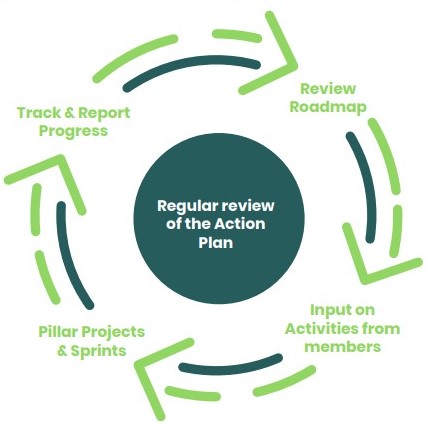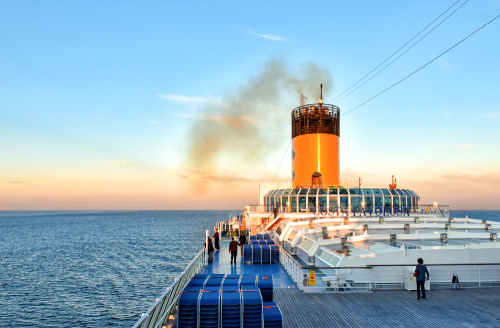Following the Mission Roadmap, the Zero-Emission Shipping Mission published an Action Plan, outlining the actions needed, with their respective timescales and required stakeholder participation, to reach Mission goals.
This Action Plan aims to bridge innovation gaps faced by the sector and shape the analysis and demonstration projects that will ultimately accelerate the adoption of zero-emission fuels for ocean-going vessels.
Innovation gaps to action
In April 2022, the Mission published an Industry Roadmap for Zero Emission Shipping which identified 120 innovation gaps to be addressed to meet the Mission’s goals, which are spread across the three pillars – ships, fuels and fueling infrastructure. These gaps fall into the five main groups:
- Safety & operational risk management: Gaps related to safety guidelines, methodologies and procedures for handling or storage of fuels, as well as standards and training for the same.
- Policy & regulation: Gaps related to the national and international policy that inform regulations or market incentives.
- Market development, business model & financial innovation: Gaps related to the economic readiness for new fuels, including novel business models, economic modeling, as well as financial identification of cost drivers, or subsidies and related funding mechanisms.
- Technology development & adaptation: RD&D gaps related to the technical development and adaptation of engines and vessels, fuels, and associated infrastructure. Examples include life cycle emissions modeling, electricity integration, next to retrofits and new designs for vessels and port equipment.
- Market analysis: Gaps related to the creation, consolidation, and dissemination of market knowledge related to the vessels, fuels, and refueling infrastructure. Examples include geographic diversity and feedstock availability assessments, availability of fuels and fueling infrastructure, or sharing best practices.

Blueprint for Future Ports program
This first program for the Mission is a collection of projects that will create a “Blueprint for Future Ports” that aims to provide zero-emission fuels at key ports along the major deep-sea shipping routes and green corridors.
The goal of the Blueprint for Future Ports program is to envision what the future infrastructure will look like for the zero-emission ready vessels that will be deployed over the coming years. The program will be Mission-led in collaboration with partners across the maritime value chain, with the aim to demonstrate a commercially viable future for zero-emission shipping.
The program consists of the three steps described below with the included projects under each step.
Whilst the Mission has set program building blocks, it recognizes that actions and priorities will change over time. The actions and activities in the first project will be some of the first to be launched by the Mission to address high-priority innovation gaps.
Future work within this program will be tailored to account for actions and achievements within the industry.
Going forward
Going forward, the Mission will work with its members to coordinate and address actions within this Action Plan, and continue to encourage external stakeholders to accelerate actions undertaken by the broader ecosystem as a way of reaching 2030 goals.
The Mission will track progress, as well as emerging gaps and opportunities, to further refine this Action Plan, ensuring it remains representative and continuously reflects the evolving needs of the shipping sector during the energy transition.






























































